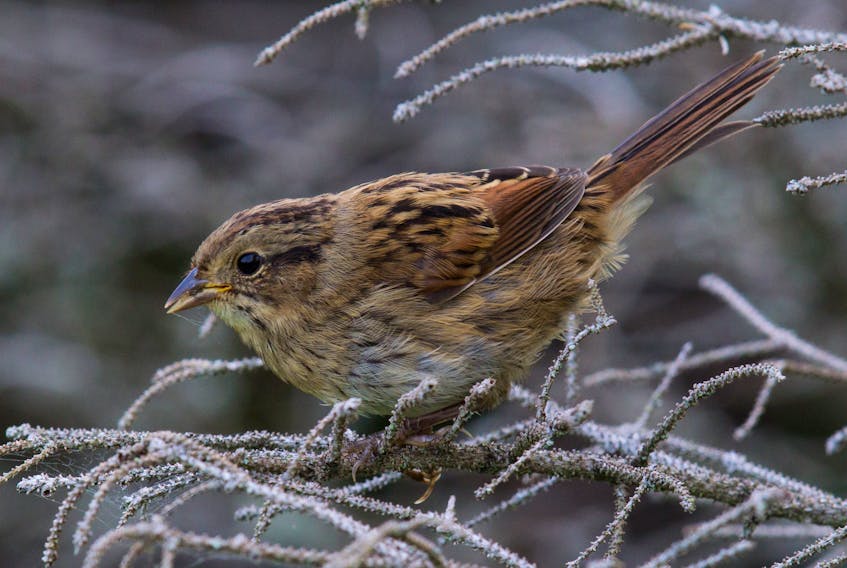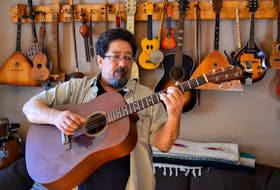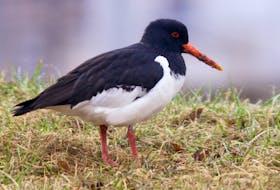It is the highlight of summer. Everything is at its richest peak.
If only it could be this way year-round.
We live in a part of the world with dramatic changes in the seasons.
I am sure we would miss the changes in the seasons if we lived in perpetual summer.
On the other hand, I am guessing we could adapt to a never-ending summer if we had to!
As I said in the last column, we had reached the summer plateau. Now the plateau is tipping ever so slightly to the back side of summer.
The front side of summer was the growing up. The beginning of new life.
Everyone has their stories to tell about encountering young birds in the summer. A number of lucky people have had precious encounters with young great horned owls in the woods. Others encountered grey fluffy loons being closely attended by the regal adults, perhaps even taking a ride on their backs.
Now the new life has come. Millions of new bird lives have entered the scene as we face the long easy slide down from the summer plateau.
The plants, the trees, the insects and the birds are all peaking in richness and abundance. It is a good time to be outside and enjoy the summer.
We are all part of the outdoor summer celebration when we are at a back-deck barbecue, beachcombing, taking a walk in the woods and, of course, birdwatching.
So where are the birds in the cycle of life in the current state of the season?
There are young birds everywhere. Spotted breasted robins have been on the go since late May. Young robins keep these spots for part of the summer. But robins nest so early that many of them have a second brood.
New young spot-breasted robins are also appearing now as the first hatched in June are starting to lose their spots and look more like the plain-breasted adults.
Juncos also nest early and often have a second nesting. At this time of year, more than half the juncos you see are striped-breasted young of the year.
Everyone has their stories to tell about encountering young birds in the summer.
A number of lucky people have had precious encounters with young great horned owls in the woods.
Others encountered grey fluffy loons being closely attended by the regal adults, perhaps even taking a ride on their backs.
Around my house, we always notice when the young crows are out.
The adults are used to checking out the backyard for possible snacks that we sometimes leave for them.
The young crows have a higher-pitched call and wait for the braver and smarter parent crows to go down to the deck to retrieve whatever leftover from our dinner plates was available that day.
Blue jays have bald heads in late summer as they go through a change of clothes.
They are less noisy at this time. Maybe they are ashamed to be seen with their bald heads.
One comes to our backyard looking for a peanut. It announces its presence with a muted jay-jay call.
This will change in September when they are fully feathered and full of confidence again. Then they seem to enjoy being the loudest bird on the block.
Other moulting birds are also keeping a low profile at this time of year as they go through a complete change of feathering.
All the adult woodland birds go through this in summer after they have reared the young from the nest.
The moulting of feathers requires a lot of energy. This is partly why it happens in mid-summer while there is such an abundance of food.
During the moulting process, the birds are missing crucial flight feathers in their wings and tails.
While they are still able to fly, they have lost some of their quickness and agility needed to escape predators. This is why they keep out of sight as much as they can for a couple weeks in mid-summer.
When the adult warblers come out the other side of the moults they have a strong new suit of feathers that they will need for the southbound migration. This will be their fall and winter work suit. It is not nearly as colourful as the suit of feathers was when they arrived in the spring.
Identifying the duller fall plumages of warblers and sparrows causes stress for all but the most experienced birders.
They can all be figured out with practice.
The young sparrows still in their juvenile feathers look amazingly similar to closely related species.
For example, the juvenile swamp sparrow is frequently misidentified as a Lincoln’s sparrows in late summer. The juvenile plumage is meant to get the bird out of the nest and quickly into the world.
If they pass the basic milestone of learning to look after themselves during the food abundance during August, the juvenile look wears off and by September they look like the more familiar adults.
Play hard. Enjoy this summer.
Bruce Mactavish is an environmental consultant and avid birdwatcher. He can be reached at [email protected].









